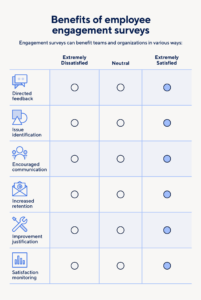A Human Resource Management (HRM) policy template is a valuable resource for organizations looking to create or update their HRM policies. It serves as a guide that outlines the essential elements of well-defined HR policies and provides a framework for developing comprehensive and effective policies that align with an organization’s specific needs and goals. By utilizing an HRM policy template, organizations can ensure their policies are consistent, legally compliant, and promote a positive and productive work environment that supports the overall success of the organization.
The primary purpose of an HRM policy template is to assist organizations in establishing clear and concise policies that govern their HR practices. The template provides a foundation for developing policies that address all aspects of the HR function, including recruitment, hiring, employee relations, compensation and benefits, performance management, and termination. It helps organizations define their expectations for employees, provide a consistent framework for decision-making, and ensure compliance with relevant laws and regulations.
Elements of an Effective Human Resource Management Policy Template
A comprehensive HRM policy template should include several key elements to ensure its effectiveness and usefulness. These elements include:
- Policy Statement: The policy statement is a concise and clear declaration of the organization’s objectives and commitments regarding a specific HR practice. It should outline the overall purpose, scope, and guiding principles of the policy.
- Definitions: This section defines the key terms used throughout the policy to ensure clarity and consistency. It is essential for terms that have multiple interpretations or may be subject to different understandings.
- Scope of Applicability: The scope of applicability specifies which employees, job categories, or divisions the policy applies to. It ensures that everyone who needs to comply with the policy is aware of their obligations.
- Roles and Responsibilities: This section outlines the roles and responsibilities of different stakeholders, including HR professionals, managers, supervisors, and employees. It clarifies who is responsible for implementing, enforcing, and reviewing the policy.
- Procedures and Guidelines: The procedures and guidelines provide detailed instructions and guidelines on how to implement and apply the policy. They offer specific steps, processes, and best practices for carrying out HR activities consistently.
Benefits of Using a Human Resource Management Policy Template
Utilizing an HRM policy template offers numerous advantages for organizations. These benefits include:
- Consistency and Standardization: The template helps organizations create consistent and standardized HR policies across the organization. This consistency ensures fair treatment of employees and promotes a sense of equity and transparency.
- Legal Compliance: By incorporating relevant legal requirements and best practices, the template assists organizations in achieving legal compliance and minimizing the risk of legal challenges or disputes.
- Improved Efficiency: The template provides a streamlined approach to policy development, saving time and resources. It eliminates the need to start from scratch and allows HR professionals to focus on more strategic initiatives.
- Employee Engagement and Morale: Well-defined and communicated HR policies create a sense of clarity, trust, and fairness among employees. This leads to improved employee engagement, morale, and productivity.
- Risk Mitigation: By establishing clear policies and procedures, organizations can mitigate risks associated with HR practices, such as discrimination, harassment, and unfair treatment.
Conclusion
An HRM policy template serves as a valuable tool for organizations seeking to create or update their HR policies. It provides a structured framework for developing comprehensive and effective policies aligned with the organization’s specific needs and goals. By utilizing an HRM policy template, organizations can ensure consistency, legal compliance, and a positive work environment that supports the success of the organization and its employees.
The template offers numerous benefits, including consistency, legal compliance, improved efficiency, enhanced employee engagement, and risk mitigation. By adopting an HRM policy template, organizations can streamline their HR processes, create a fair and transparent work environment, and foster a culture of respect and productivity among their workforce.
FAQ
What is the purpose of an HRM policy template?
An HRM policy template provides a structured framework for organizations to develop comprehensive and effective HR policies. It helps ensure consistency, legal compliance, and a positive work environment.
What are the key elements of an effective HRM policy template?
An effective HRM policy template includes a policy statement, definitions, scope of applicability, roles and responsibilities, and procedures and guidelines.
What are the benefits of using an HRM policy template?
The benefits of using an HRM policy template include consistency, legal compliance, improved efficiency, enhanced employee engagement, and risk mitigation.
How can organizations utilize an HRM policy template?
Organizations can utilize an HRM policy template by adapting it to their specific needs, ensuring legal compliance, communicating the policies effectively to employees, and regularly reviewing and updating the policies.
What are some common challenges in implementing an HRM policy template?
Common challenges in implementing an HRM policy template include gaining buy-in from stakeholders, ensuring consistency in application, addressing changing laws and regulations, and overcoming resistance to change.
